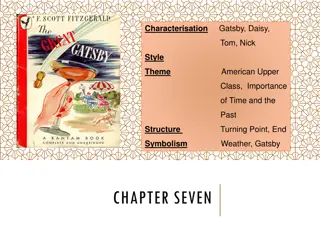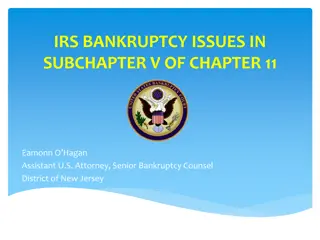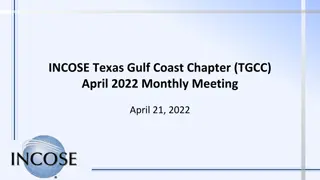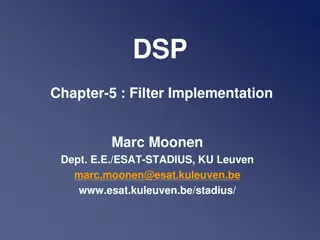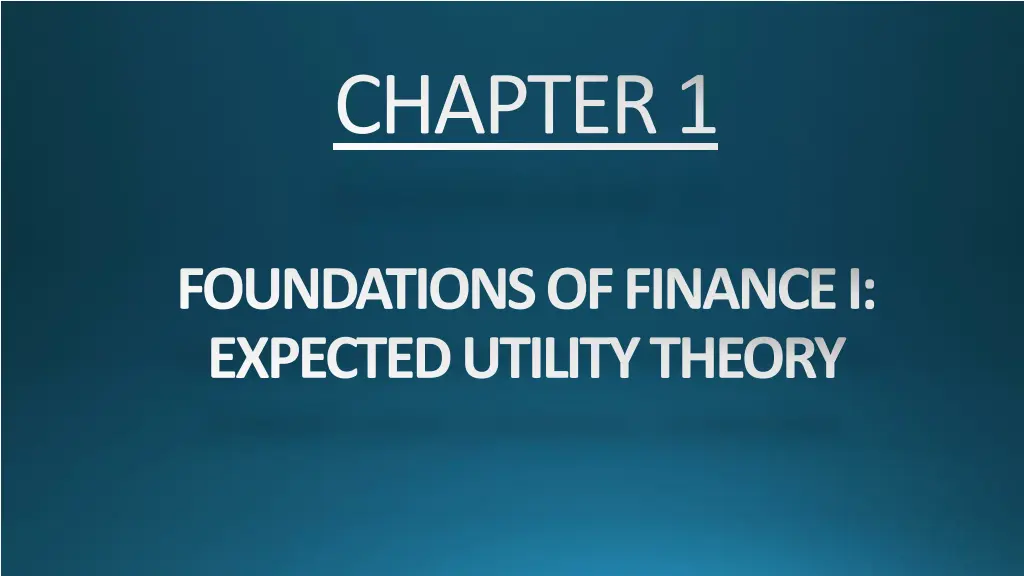
Foundations of Finance I: Expected Utility Theory and Rational Preferences
Explore the foundations of finance, including expected utility theory, rational preferences, and utility maximization. Learn about neoclassical economics, market inefficiencies, and individual decision-making based on relevant information.
Download Presentation

Please find below an Image/Link to download the presentation.
The content on the website is provided AS IS for your information and personal use only. It may not be sold, licensed, or shared on other websites without obtaining consent from the author. If you encounter any issues during the download, it is possible that the publisher has removed the file from their server.
You are allowed to download the files provided on this website for personal or commercial use, subject to the condition that they are used lawfully. All files are the property of their respective owners.
The content on the website is provided AS IS for your information and personal use only. It may not be sold, licensed, or shared on other websites without obtaining consent from the author.
E N D
Presentation Transcript
CHAPTER 1 FOUNDATIONS OF FINANCE I: EXPECTED UTILITY THEORY
Investors are irrational (not rational) and markets are inefficient (not efficient)
NEOCLASSICAL ECONOMICS Main assumptions: People have rational preferences across possible outcomes or states of nature People maximize utility and firms maximize profits People make independent decisions based on all relevant information
Assumption 1: Rational Preferences Suppose there are two outcomes: x and y If x > y, then individual prefers x to y (strict preference). If x ~ y, then individual is indifferent between x and y (indifference). If x y, then individual prefers x or is indifferent between two choices (weak preference).
Assumption 1: Rational Preferences Two axioms for a choiceto be rational are: Completeness Transitivity
Assumption 2: Utility Maximization Utility theory is used to describe preferences Utility can be described as the satisfaction received from a particular outcome Ex: For an individual, if U( 2 bread, 1 water) > U(1 bread, 2 water) What does that mean?
An individual considers all possible bundle of goods (outcomes) that satisfy his/her needs and desires under the budget constraint (which is based on level of wealth or income), and then chooses the bundle that maximizes his/her utility.
As income increases individuals gain a correspondingly smaller increase in satisfaction and happiness. Diminishing marginal utility of income and wealth
Assumption 3: Relevant Information Individuals maximize their utility byusing full information of the choice set. In theoryit is assumed that thereare no costs of information BUT In practice, there is COST of Acquiring Assimilating Understanding the INFORMATION
EXPECTED UTILITY THEORY In financial decision making process, people face with uncertainty of outcomes and they have to deal with it in order to make decisions. The origins of the expected utility theory dates back to 18th century. The theory was orginally advanced by Daniel Bernoulli in his paper(1738) Exposition of a New Theory on the Measurement of Risk Bernoulli discussed individuals do not always make rational decisions under risky situations. (Remember St. Petersburg Paradox!) When there is uncertainty, individuals tend to be risk averse. Later, the theory was developed by John von Neumann and Oskar Morgenstern (1944) in their book Theory of Games and Economic Behavior .
EXPECTED UTILITY THEORY The expected utility theory deals with the analysis of situations where individuals must make a decision without knowing which outcomes may result from that decision, this is, decision making under uncertainty. These individuals will choose the act that will result in the highest expected utility, being this the sum of the products of probability and utility over all possible outcomes.
Axioms of the ExpectedUtilityTheory Completeness: People can compare all possible outcomes and asses preference or indifference. (x>y or x<y or x~y) Transitivity: People s choices are transitive (x y z) Continuity: Given any certain level w* between highest (wH)and lowest (wL), there exists one and only one u* such that ; w* ~ P(u*, wH, wL) Rationality: A gamble which assigns a higher probability to a preferred outcome will be preferred to one which assigns a lower probability to a preferred outcome. Independence: If a decision-maker is indifferent between two possible outcomes, then she/he will be indifferent between two gambles which offer them with equal probabilities.
EXPECTED UTILITY THEORY Expected utility theory is set up to deal with risk, not uncertainty. Risk vs. Uncertainty (What is the difference?) RISK UNCERTAINITY Risk is a measurable uncertainty. Uncertainity is an unknown risk. Risk can be quantitavely measured. Uncertainity cannot be quantitavely measured. Risk can be transferred. Uncertainity cannot be transferred. Risk is objective Uncertainty is subjective In risk, all the possible alternatives of a problem are known in advance. In uncertainty no previous knowledge is possible.
EXPECTED UTILITY THEORY Prospect (P): A series of wealth outcomes, each of which is associated with a probability. 1. Suppose there are only two states of nature (two outcomes): Low wealth $50,000 High wealth $1,000,000 P1 (0.40, $50,000, $1,000,000) Probabilities assigned: Low wealth 40% High weath 60%
EXPECTED UTILITY THEORY 2. Suppose there are only two states of nature (two outcomes): Low wealth $100,000 High wealth $1,000,000 Probabilities assigned: Low wealth 50% High weath 50% P2 (0.50, $100,000, $1,000,000)
EXPECTED UTILITY THEORY P1 (0.40, $50,000, $1,000,000) P2 (0.50, $100,000, $1,000,000) Given these two prospects, two risky alternatives, which of one them you would prefer? Lets calculate the expected utilities of the prospects! Remember: u(w) = ln(w) E[u(P1)] = U(P1) = 0.40*u($50,000) + 0.60*u($1,000,000) = 0.40*1.6094 + 0.60*4.6052 = 3.0469 P2 is superior to P1 So choose P2! E[u(P2)] = U(P2) = 0.50*u($100,000) + 0.50*u($1,000,000) = 0.50*2.3026 + 0.50*4.6052 = 3.4539
RISK ATTITUDE Most evidence show that people are RISK AVERSE Individuals do not want to take risk unless they are paid for it. Suppose there are two stocks with same expected returns and different risk levels. Stock Expected Return Risk StockA 10% %20 Stock B 10% %15 Tell which one you would like to invest in?
RISK ATTITUDE Individuals attitudes towards risk may show difference. Types of Investors: Risk averse Risk seeker or Risk lover Risk neutral
RISK ATTITUDE Risk averse people dislike risk and prefer the expected value of a prospect to the prospect itself. u[E(P)] > E[u(P)] Someone whois risk averse has a concave utility function. This type of person would take the expected value of a prospect with certainity than actually take a gamble on an uncertain outcome.
RISK ATTITUDE Risk seeker people like risk and prefer the prospect to the expected value of a prospect. u[E(P)] < E[u(P)] Someone whois risk seeker has a convex utility function. This type of person would rather gamble on the uncertain outcome than take the expected value of a prospect withcertainity.
RISK ATTITUDE Risk neutral peopleareinsensitive to risk. u[E(P)] = E[u(P)] Someone whois risk neutral has a linear utility function. This type of person would be indifferent between choosing a gamble on an uncertain outcome and a prospect withcertainity.
RISK ATTITUDE Certainity equivalent (CE) is a certain wealth level that leads the decision-maker to be indifferent between this certain wealth level and a particular prospect. As risk aversion of an individual increases, the risk premium demanded for any given risky outcome will also increase. Risk Premium (RP) = E (P) CE CE < E (P) Risk averse Risk seeker CE > E(P) Risk neutral CE = E(P)
ALLAIS PARADOX A contradiction to expected utility theory Allais Paradox
ALLAIS PARADOX E[u(A)] = u($1,000,000) E[u(A*)] = (0.01)u($0) + (0.89)u($1,000,000) + (0.10)u($5,000,000) If people choose A, then; u($1,000,000) > (0.89) u($1,000,000) + (0.10) u($5,000,000) (0.11) u($1,000,000) > (0.10) u($5,000,000)
ALLAIS PARADOX E[u(B)] = (0.89) u($0) + (0.11) u($1,000,000) E[u(B*)] = (0.90) u($0) + (0.10) u($5,000,000) If people choose B*, then; (0.10) u($5,000,000) > (0.11) u($1,000,000)
ALLAIS PARADOX For Question 1, people preferred Prospect A to prospect A*, which means: (0.11) u($1,000,000) > (0.10) u($5,000,000) For Question 2, people preferred Prospect B* to prospect B, which means: (0.10) u($5,000,000) > (0.11) u($1,000,000) Allais Paradox shows that, individuals decisions can be inconsistent with Expected Utility Theory







